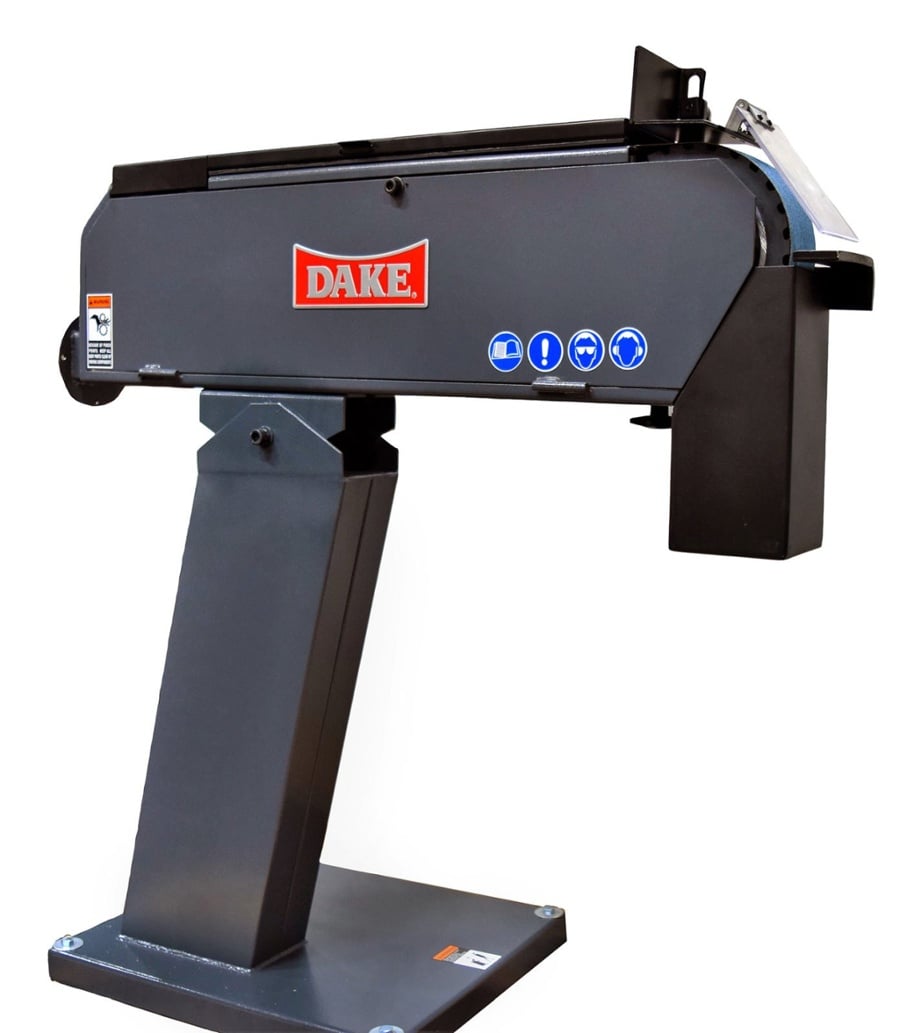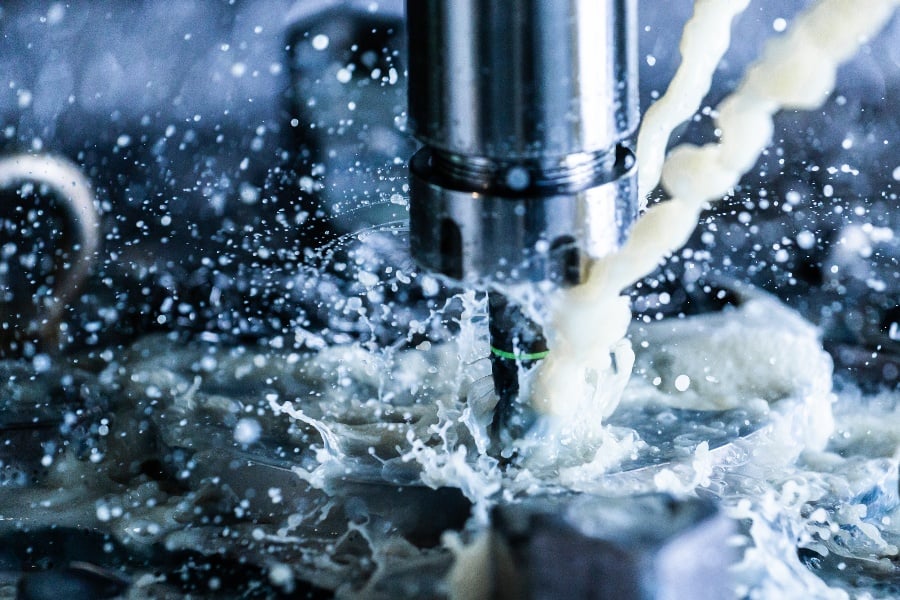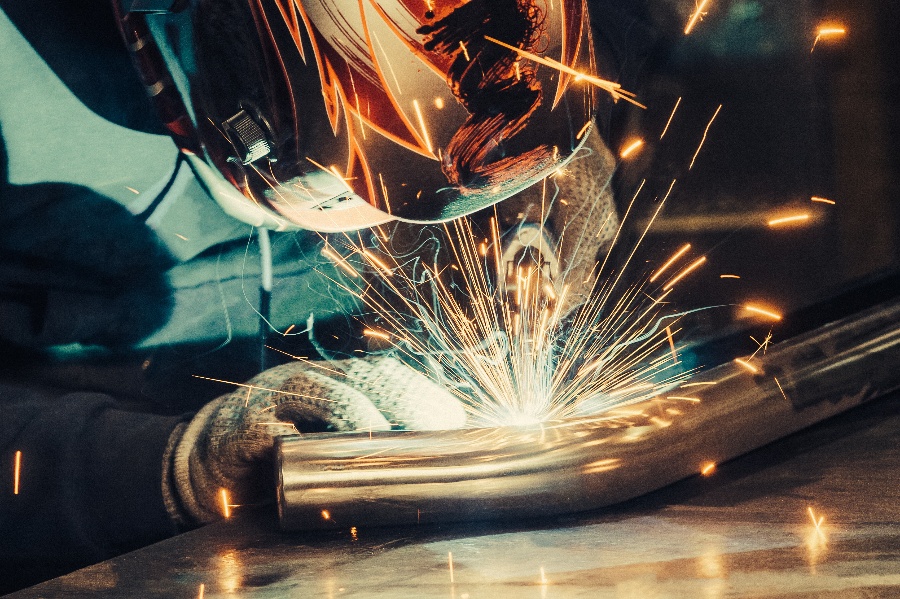Here at Dake, we take great pride in our machinery. We strive to only produce the best equipment, which includes our popular Belt Grinder Model G-75.
However, at the end of the day, machines can break down for a number of different reasons. In this post, we will cover the four most common belt grinder issues and how to fix them.
1. A Dead Wheel
When you start to notice that the lifespan of the wheel has been drastically shortened, there could be a few different reasons as to why that is happening.
- The grain is too soft.
- The tool is under- or overpowered.
- Excessive pressure caused premature wear.
Two things can cause the grain to go soft. The first is inappropriate storage, and the second is excessive pressure, which we will cover shortly. If the wheel is not stored in a clean, dry location that is temperature-controlled, then the grain may lose its sharpness. We also recommend storing the wheel on a stable, flat surface to reduce the chances of cracking or warping.
If the belt grinder is underpowered, it can lead to a softened grain. This will not be strong enough to fracture the metal material, and it will render the grinder essentially useless. Check your grinder’s extension cord to ensure that it is not choking out the power. We recommend using a 10-gauge.
Excessive pressure on the wheel can lead to too much heat. This causes the wheel to wear down quickly, which weakens the overall structure of the component. You can fix this issue by grinding with less downward pressure and incorporating motion as well. This method is also safer.
2. Glazing the Edges
If the metal material gets too hot, it can stick to the grinder’s cutting wheel. This is known as edge glazing. Excessive heat that leads to edge glazing can be caused by three things.
- The material is too hard.
- There is not enough motion.
- The pressure is too light.
If the material is too hard for the grain you have selected, it can cause the grain to become soft. It can also cause excessive heat buildup, which leads to edge glazing. To fix this issue, swap out the grain or a sharper one.
Movement is important during grinding applications. If there isn’t enough motion, edge glazing can occur. To prevent this issue, you should consistently be using a rocking motion throughout the grinding process. We recommend a forward-back motion on an even keel for optimized movement and reduced friction.
The last culprit of edge glazing is insufficient pressure. This can cause the wheel to skip. To remedy this issue, simply use the aforementioned forward-back motion consistently.
3.Wheel Damage
Specifically, damage to the arbor hole or flange can lead to an overall weakening of the belt grinder wheel. This can not only lead to a total failure of the machine, but it is also dangerous. There are four causes of arbor hole or flange damage.
- Too much pressure can weaken the wheel.
- Excessive side load can create cracks.
- Not grinding in a straight line can cause binding.
- Improper mounting can cause the belt grinder to become unbalanced.
Excessive pressure is a common theme when it comes to belt grinders. If you find you are applying too much pressure to get the job done, simply switch over to a thick wheel.
Never use the side of the wheel to grind metals. This will cause cracking and eventually machine failure. To prevent accidental side loading, always make sure that the metal material is properly clamped in place. Also, maintain a consistent 90° angle when grinding and use the aforementioned rocking motion.
If you twist or bend the grinder’s wheel to accommodate arcs or rounded corners, you can cause the wheel to bind or even break. Always use a straight-line motion to prevent this. A bound up wheel can kick back towards the operator, which is very dangerous.
Pro Tip: If the wheel binds, do not restart the wheel while it is in the cutting line. You must first remove the wheel, check for any damage, and then restart the wheel away from the metal material. Once the belt grinder has gotten back up to speed, you can enter the cut line again.
Arbor hole and flange damage can also occur when the wheel is improperly mounted. We recommend using adapting nuts to avoid over-tightening the wheel. This will keep the grinder balanced and controllable.
4. Damage to the Edges
You should always perform an inspection of the wheel before beginning any grinding action. Micro-cracks are very difficult to see, but they can cause a lot of issues with the grinder if they aren’t addressed.
To check for cracks in the wheel, turn the grinder on for a minute and check for any chunking, vibrating, or other signs of the wheel being off balance.
- There are three common issues that can result in damaged edges on the wheel.
- The metal material is not clamped correctly.
- The grinding is happening too far from the clamped area.
- You’re using the wrong application technique.
If the metal material is not clamped properly, this can cause too much vibration. This leads to damage to the edge of the wheel. To avoid this, simply ensure that the metal is properly clamped down.
The farther you cut from the clamped area, the more vibrations you will get. You should always cut as close to the clamped area as possible while keeping enough clearance for the tool, the guard, and your hands.
Finally, if you are using the wrong technique for the current wheel, this can cause damage to the edges of the wheel. For example, you should never grind on a cutting wheel and vice versa.
Learn More at Dake
Now that you understand the four most common issues with belt grinders, you will be more prepared to troubleshoot and problem-solve if these issues ever occur in your shop. Knowing how to remedy these problems can save you a lot of time and money down the road. It also improves your shop’s overall safety.
If you are interested in purchasing the Belt Grinder Model G-75, get in touch with our Dake experts today.
-1.jpg?width=1200&height=525&name=DAKE003_%20Logos_Red%20(002)-1.jpg)


